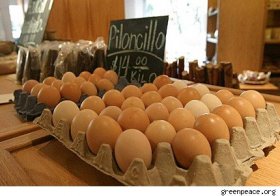
Speak Mexican Spanish
 “I’m done.” I said in Spanish as I smiled and looked at our waitress, “Muchas gracias!”, I continued, beaming at my Spanish prowess. She smiled back — actually she looked like she was struggling to hold in laughter when I realized my error — I had just told her I was done like DEAD. Ack! The embarrassment of the situation got me, I smiled sheepishly and dragged Tom to the exit to make a quick escape.
“I’m done.” I said in Spanish as I smiled and looked at our waitress, “Muchas gracias!”, I continued, beaming at my Spanish prowess. She smiled back — actually she looked like she was struggling to hold in laughter when I realized my error — I had just told her I was done like DEAD. Ack! The embarrassment of the situation got me, I smiled sheepishly and dragged Tom to the exit to make a quick escape.
When traveling in a foreign country it is important (and so much more fun!) to try speaking the language — even just the tiniest effort can make all the difference. So far the Mexicans seem to be pretty encouraging, they happily smile and nod while we stumble through our limited Spanish. They even are nice enough to pretend that we are making sense!
When you are learning a new language you are going to make a lot of mistakes, that it just the way it goes and, of course, the only way to learn is to make a few errors. However, there are some things that would be nice to know before you start chatting away in another language.
Here are a few tips for Mexican Spanish that you might want to keep in mind to prevent awkward speaking situations:
ME ME ME
This first person pronoun ( “Yo” which means “I”) is often over-used by beginners. If you end up “Yo-yo ing” too much it starts to sound very vain and self-centered. “I this and I that…” starts to sound like ” Me, me ME!” to Mexican ears. Since verbs, when conjugated correctly, implicitly hold who is speaking, try to drop pronouns as they are not necessary. Children are taught at a very young age to drop the “Yo” pronoun and travelers should too.
I want….
A verb that is picked up very quickly by travelers is “querer” which means to want. “Yo quiero” (or just “Quiero”) translates to “I want…”, a very useful phrase except for the that fact that when used it actually translates to quite a blunt request. A better and more polite term to use is “Quisiera….” (Kee-See-EH-Rah) which means “I would like…”. This term is extremely useful and is viewed by the Mexicans as a much more polite.
The dangers of asking for dairy products…who knew?
Mexico has a TON of sexual innuendos. A lot of them seem to focus on the male anatomy. “Leche”, milk in Spanish, is a slang term for semen. If you need to purchase milk do NOT say “Tiene leche?” ( Do you have milk?) or you are sure to hear giggles erupt around you. To prevent this type of embarrassment the best way to ask is to say, “Is there milk?” (Hay leche? which is pronounced Ahee Lay-Chay). There is the same type of situation for eggs, known as “huevos”, which can refer to testicles (ah…machismo culture at its finest). You’ll sometimes hear little old ladies ask for “blanquillos” (little white ones) instead of using this offensive term.
But it sounds the same!
Many Spanish words sound very similar to English words which makes it easy to improvise and try out a word that sounds like it should be correct in Spanish. It is great to get in there and try, in fact, that is what you should be doing — but a word of caution. Words that sound similar can have totally different meanings in Spanish than in English. For example in English we say “I’m embarrassed”. “Embarazada” in Spanish means that you are pregnant. A rather large difference there, right?
Fumbling and messing up are all part of the learning process but sometimes it is much nicer to have a heads up before you stick your foot in your mouth!














